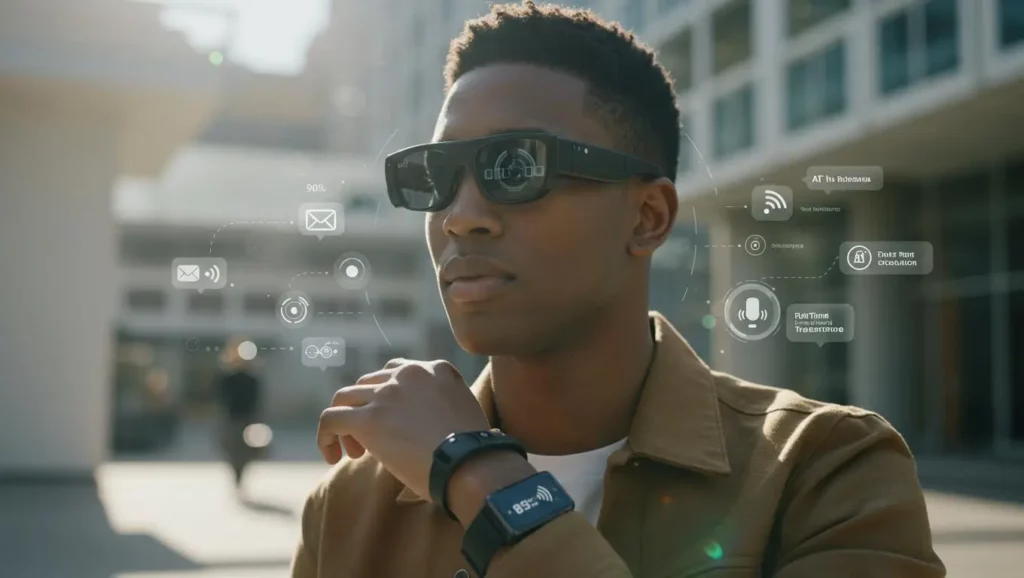Meta makes a bold move with its Ray-Ban Meta Display glasses. A far more advanced product than Google Glass or HoloLens, this innovation could even signal the end of the smartphone era.
Mark Zuckerberg remains steadfast: the future will be dominated by smart connected glasses, which may gradually replace our smartphones. With the introduction of the Ray-Ban Meta Display at Meta Connect 2025, the Meta CEO seems determined to prove his point.
These new glasses, set to launch in France in 2026, may not yet be fully realized augmented reality glasses, but they are quickly approaching that standard. They already allow users to:
- send messages without needing to take out their phone, thanks to an integrated screen;
- make video calls;
- receive instant translations;
- access GPS navigation;
- easily interact with Meta AI.
Furthermore, they come with an EMG bracelet (light neural interface) that enables gesture control of the interface with simple hand movements. Priced at 799 dollars, akin to a high-end smartphone, Meta brings its glasses closer to the vision of a phone-less world.
How Meta succeeds where Google and Microsoft failed with their glasses
It’s worth noting that Google Glass and HoloLens never captivated the general public. Google officially abandoned its project in 2023, while Microsoft ended its HoloLens initiative in 2024.
So, why might Meta succeed where these giants stumbled? Firstly, through its partnership with Ray-Ban, Meta offers a genuine fashion accessory rather than just a tech gadget. Additionally, Meta glasses provide everyday useful features rather than elusive futuristic promises.
Lastly, the price point is much more accessible. While Google Glass launched at 1,500 dollars, Meta’s glasses are priced at half that. This could significantly impact widespread adoption.
Meta gains an edge over Apple, Samsung, and Google in the smart glasses race
Apple is not expected to release its first smart glasses with a display until 2028, according to analyst Ming Chi Kuo. Meanwhile, Samsung is focusing on its mixed reality headset, Moohan, and Google is developing an Android XR platform without gesture interaction.
In other words, Meta is several years ahead. This isn’t just talk; in July, the EssilorLuxottica Group reported that sales of Ray-Ban Meta glasses (without a display) had tripled in one year. The Meta Display could enhance this momentum and solidify Meta’s position as the market leader.
Meta bets on a glasses + AI + gesture interface ecosystem to surpass competitors
With this glasses + bracelet duo, Meta is laying the groundwork for a true post-smartphone ecosystem. Zuckerberg has reiterated his clear ambition to replace phones with smart glasses.
The ongoing Orion project aims to provide an immersive and autonomous augmented reality experience.
In summary, beyond the sleek design and practical functions, Meta is pursuing an ambitious and coherent strategy. Unlike many startups that promise without delivering, Meta moves forward, gradually but surely. So, in five years, will we view our phones the way we now regard outdated MP3 players? Only time will tell.




